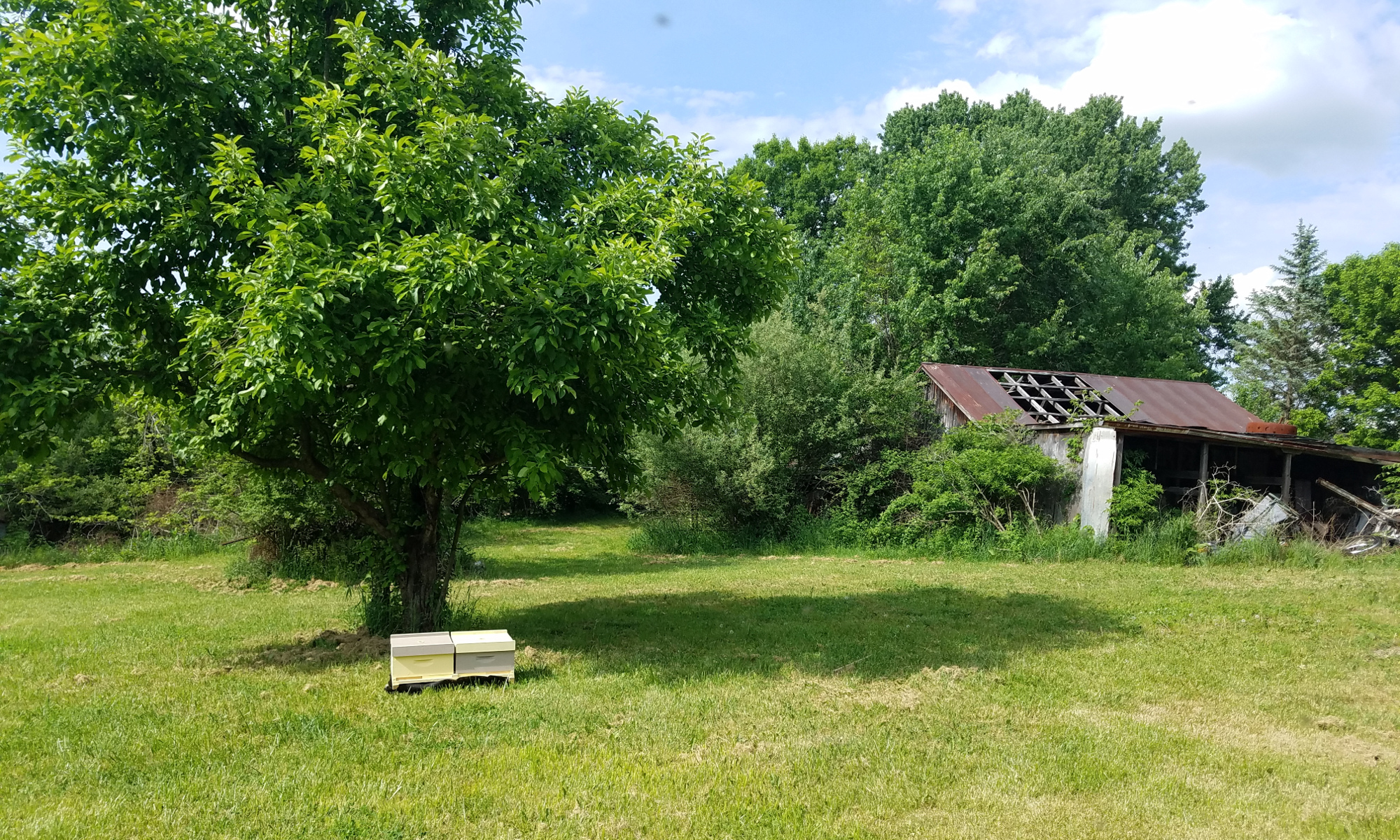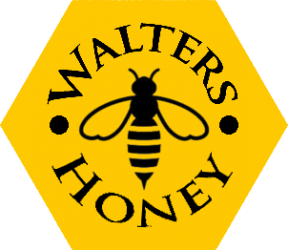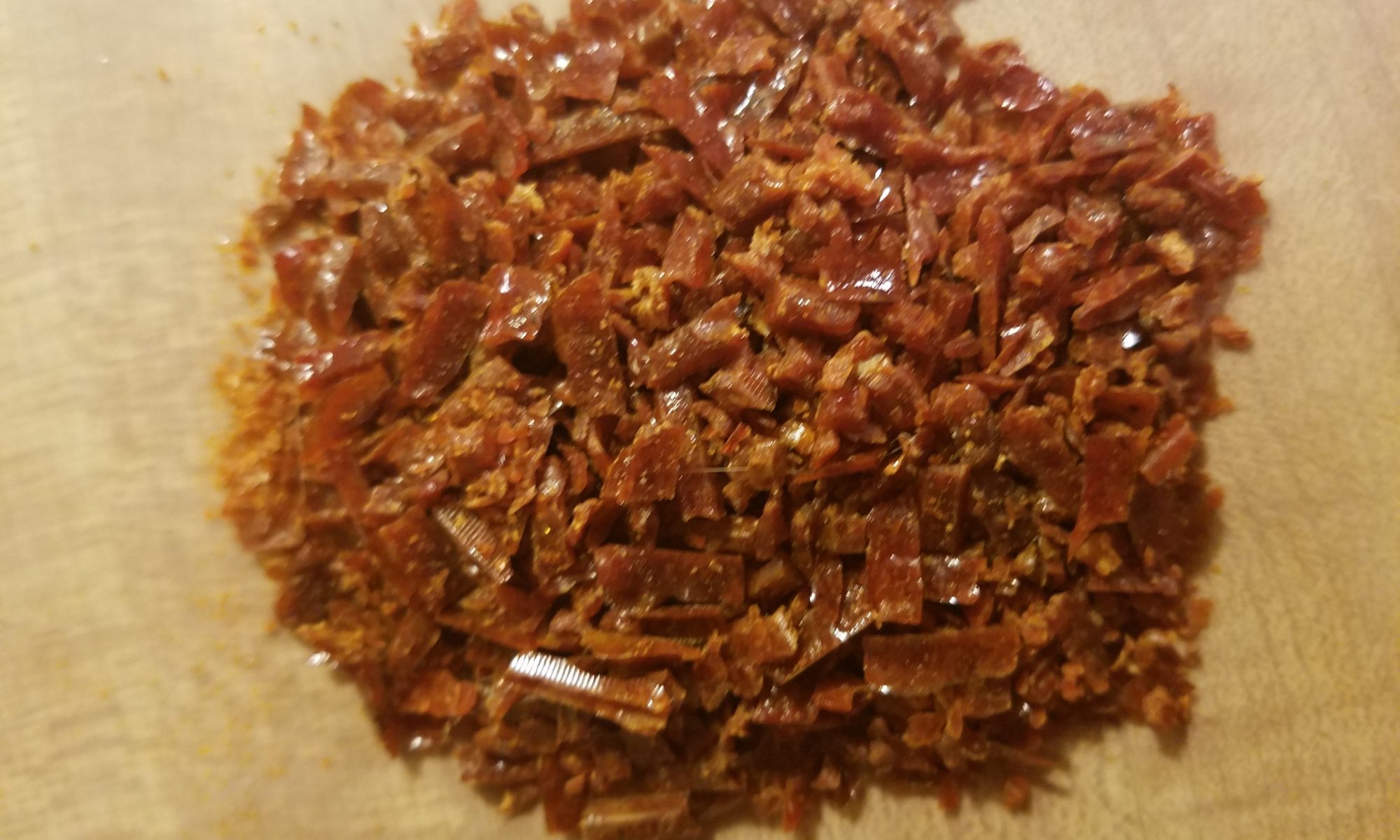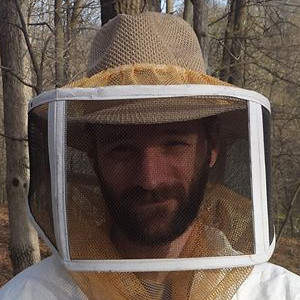As more people learn we work with bees, the more I’m asked about propolis. Bee keepers often call this ‘bee glue’ as they use it to seal, coat, cover, stick, gum up, and generally make a mess of everything with it. Propolis is a latin word meaning ‘Defense of the City’ as the bees use it to effectively seal the hive from intrusion by other bugs, infections, weather, or otherwise. They can even use it to mummify a mouse that has entered the hive and died to prevent its body from decomposing and introducing disease.. Propolis varies from hive to hive in both color and composition. In lab tests, propolis has been found to generally contain more than 50 unique compounds, which the bees dutifully collect from flower buds, tree resins, and much more. In our area, it’s comosed of about 50% resins, about 30% wax, 10% essential oils, 5% pollen, and 5 % other. It’s antiviral, antifungal, antibacterial, and anti inflammatory. It’s sticky and gooey like a caramel apple on a hot day, hard as a rock at about 50, and when frozen becomes brittle like hard sugar candy. In the summer it can be collected by scraping it from places in the hive, or by way of a component called a propolis trap. This is basically a grid placed at the top of the hive. The cover is then propped up slightly to let in light. The bees use the propolis to try sealing the light out, by filling the gaps in the trap. When ready to collect, the trap is removed, frozen, and the propolis can be broken off and collected.
We decided to collect a small amount of propolis and use it to produce a bottle of propolis extract. This is propolis disolved as completely as possible into a solution of 95% pure grain alcohol. We mixed it to produce about a 25-30% concentration, about the highest possible with this process. The uses for this are many, and we intend to try some ourselves. We’re also planning to collect propolis next season to produce a batch or two of extract for those who have shown interest. We’re also looking to produce propolis oil as well, better suited for application to the skin in creams or salves.
When we decided to look into propolis and its uses we were overwhelmed by the amount of claims about it. There is a ton of info about its benefits across the web. Some seem a bit far fetched, but many are backed by science and legitimate medical studies by the likes of the National Institute of Health and many others. A quick search will lead you to both, but some of the more notable and legitimate uses are as an additive to cough drops, or added to honey to fight off colds and viral infections of the throat and upper respiratory tract, added to a cream to fight the herpes virus during a cold sore outbreak, as a mouth rinse to heal oral injuries or after dental surgery to speed healing, as a treatment of minor burns or other skin injury, boosting immune function, treating GI issues such as Helicobactor Pylori infection, treatment of canker sores, as an antioxidant, in treatment of nose and throat cancers, giardiasis, thrush, in healing and protection of the liver, in apoptosis (cell death) assisting against cancer and tumor growth, and MUCH more. Please do your own research on this. Again, many of these claims are lofty, and many have little research done, but many are tested, though not enough to be backed yet by the FDA. While this might not be a best first choice for some of these issues, it could be a powerful supplement assisting with these conditions.
Despite working in IT, I prefer spending my time outdoors. I enjoy beekeeping, hiking, camping, and about anything else I can do outside. A Do-It-Yourself’er, I’ve spent much of my life learning new skills like beekeeping, carpentry, mechanics, construction, and more. This gives a refreshing break from the days of screen time we all endure.



